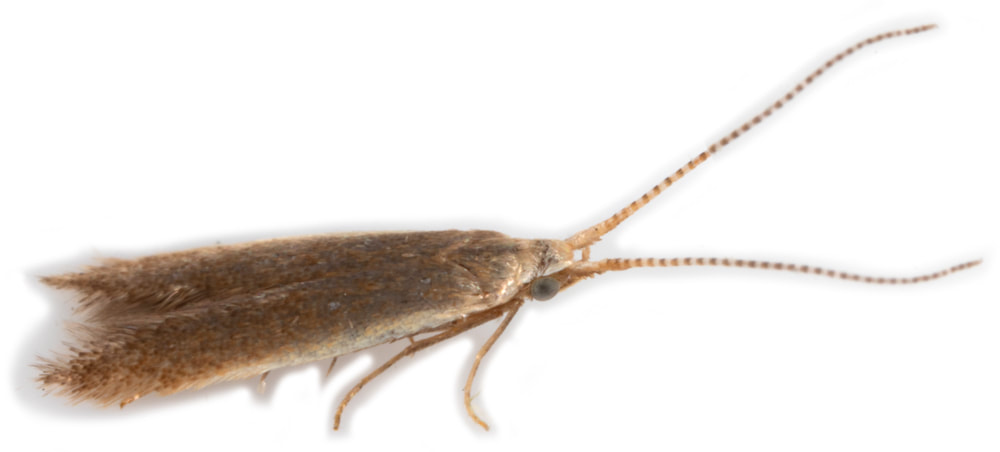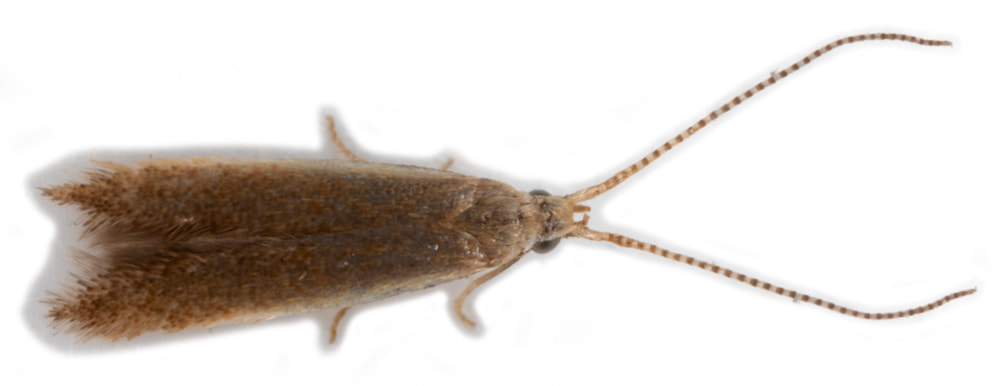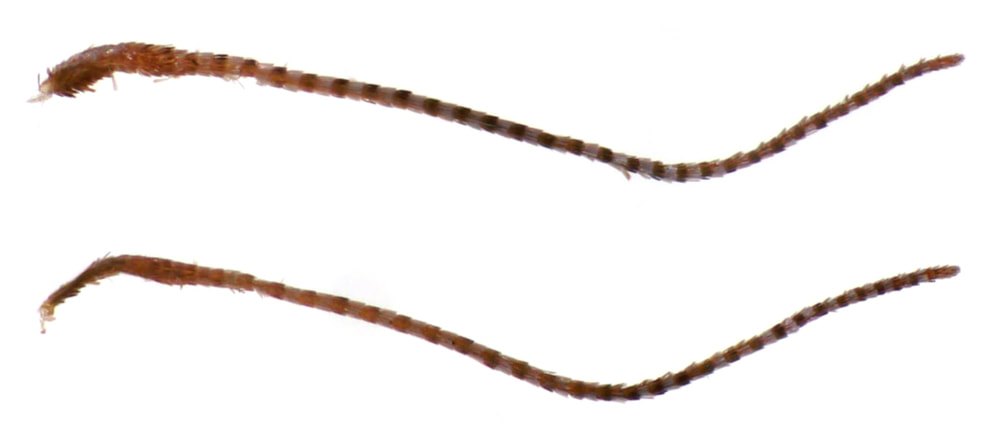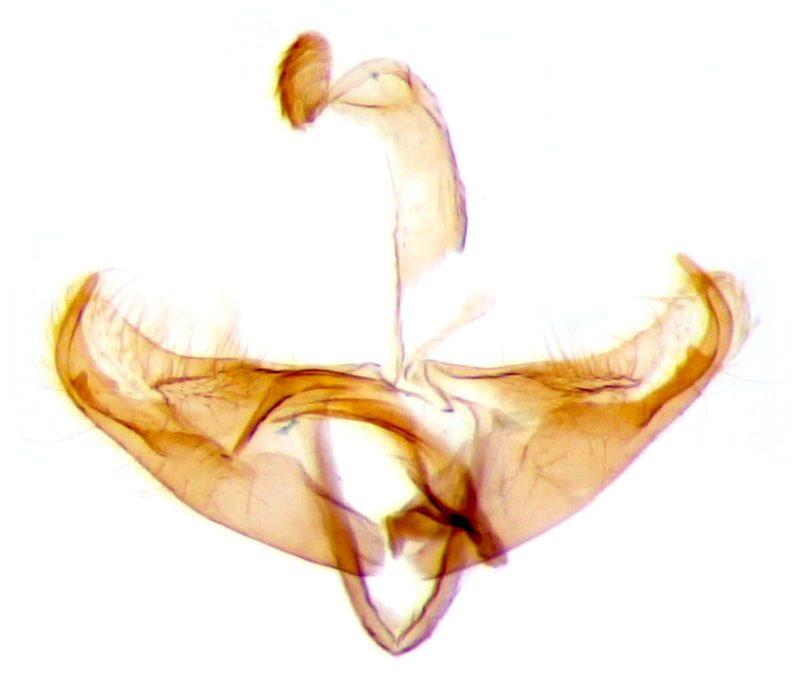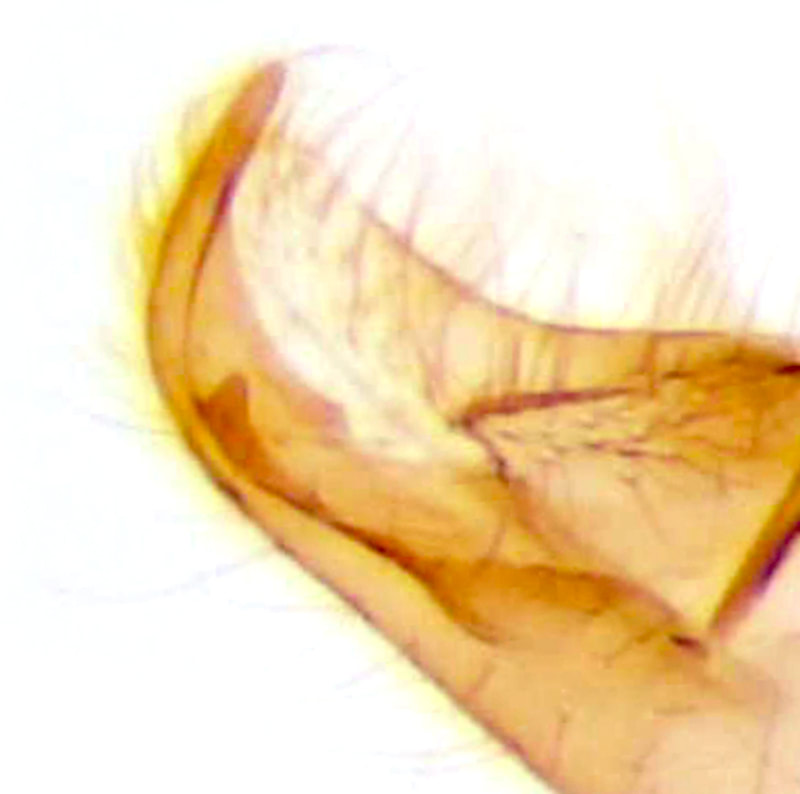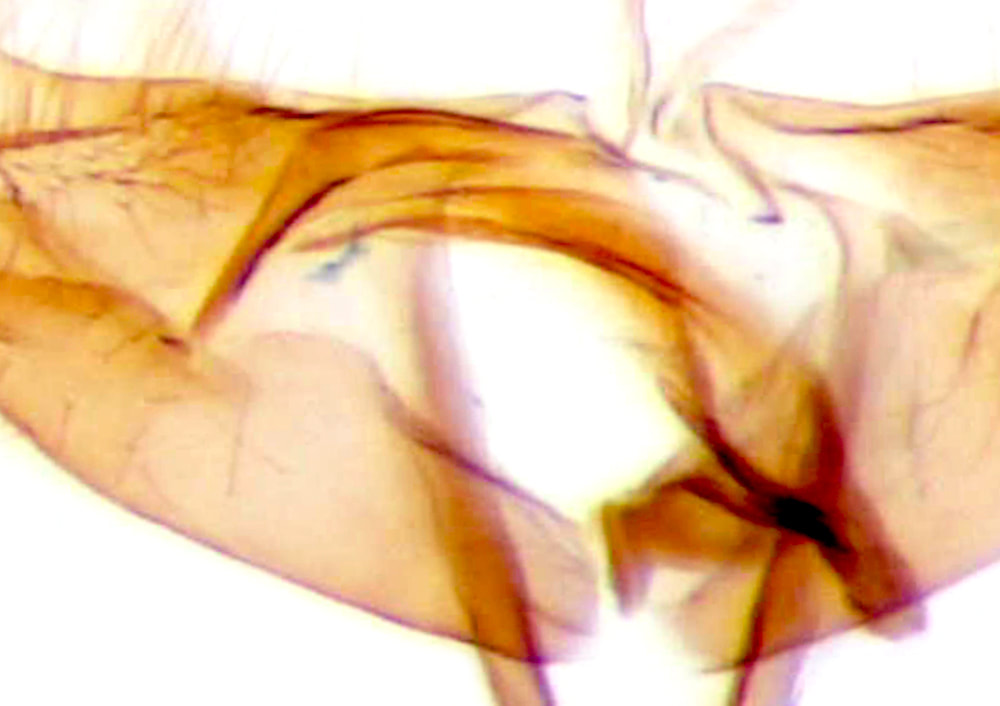37.011 Coleophora badiipennella (Small Elm Case-bearer)
ws: 9-10.5mm (MBGBI3); Jun-Jul; English/small-leaved elm (Ulmus procera/minor); locally common in England.
§1 Westcliff-on-sea, Essex; 05/07/2019; male; fw 3.8mm
All images © Chris Lewis
All images © Chris Lewis
Page published 19/12/2019 (§1)
